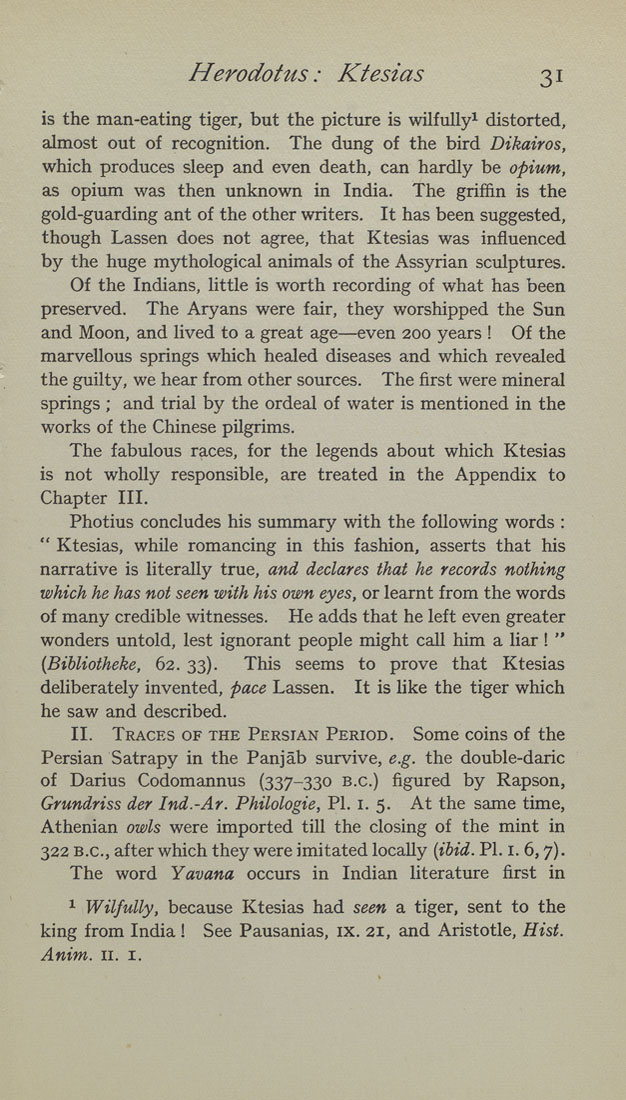Herodotus: Ktesias 31
is the man-eating tiger, but the picture is wilfully^ distorted,
almost out of recognition. The dung of the bird Dikairos,
which produces sleep and even death, can hardly be opium,
as opium was then unknown in India. The griffin is the
gold-guarding ant of the other writers. It has been suggested,
though Lassen does not agree, that Ktesias was influenced
by the huge mythological animals of the Assyrian sculptures.
Of the Indians, little is worth recording of what has been
preserved. The Aryans were fair, they worshipped the Sun
and Moon, and lived to a great age—even 200 years ! Of the
marvellous springs which healed diseases and which revealed
the guilty, we hear from other sources. The first were mineral
springs ; and trial by the ordeal of water is mentioned in the
works of the Chinese pilgrims.
The fabulous races, for the legends about which Ktesias
is not wholly responsible, are treated in the Appendix to
Chapter III.
Photius concludes his summary with the following words :
" Ktesias, while romancing in this fashion, asserts that his
narrative is literally true, and declares that he records nothing
which he has not seen with his own eyes, or learnt from the words
of many credible witnesses. He adds that he left even greater
wonders untold, lest ignorant people might call him a liar ! "
[Bibliotheke, 62. 33). This seems to prove that Ktesias
deliberately invented, pace Lassen. It is like the tiger which
he saw and described.
II. Traces of the Persian Period. Some coins of the
Persian Satrapy in the Panjab survive, e.g. the double-daric
of Darius Codomannus (337-330 b.c) figured by Rapson,
Grundriss der Ind.-Ar. Philologie, PI, i, 5. At the same time,
Athenian owls were imported till the closing of the mint in
322 B.C., after which they were imitated locally {ibid. PI. i. 6,7).
The word Yavana occurs in Indian literature first in
^ Wilfully, because Ktesias had seen a tiger, sent to the
king from India! See Pausanias, ix. 21, and Aristotle, Hist.
Anim. 11. i.
|








